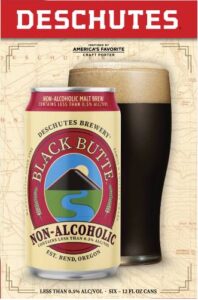
(Courtesy Heineken 0.0)
Non-alcoholic beer has come a long way since your Uncle Ed was forced to order an O’Doul’s, and new brewing techniques are at the forefront of this evolution.
The market for non-alcoholic beer has been growing steadily as more people opt for healthier lifestyles. And concerns about alcohol consumption’s effects on health, along with the increasing popularity of wellness and fitness trends, are fueling the growing demand.
But so is the fact that buzz-free beers have just gotten so much more delicious, so much so that some consumers are surprised to learn that they’re actually drinking a non-alcoholic beverage. They can be that convincing.
And new brewing innovations are the reason…
Traditional methods of producing non-alcoholic beer often involved boiling off the alcohol, which unfortunately also removed much of the beer’s flavor and aroma. This process frequently resulted in a flat, watery beverage. Another method was to stop the fermentation process early, but this often led to a lack of depth and complexity in the beer.
Modern techniques, however, are revolutionizing the production of non-alcoholic beer. One of the most notable advancements is vacuum distillation, which removes alcohol at lower temperatures, preserving the beer’s essential flavors and aromas. Another technique is reverse osmosis, where alcohol is filtered out while retaining the water, flavor compounds, and aromatic substances.

(Courtesy Partake Brewing)
Brewers are also experimenting with different fermentation methods. For example, some are using yeast strains that produce minimal alcohol while still allowing for the development of complex flavors. Others are implementing controlled fermentation processes that limit alcohol production without sacrificing taste.
Cutting-edge craft brewers are now focusing on enhancing the flavor profile of non-alcoholic beers, experimenting with a variety of hops, malts, and adjuncts to create rich, full-bodied beers that stand with in the alcohol sector. The use of dry-hopping, where hops are added post-fermentation, has become popular to intensify the aroma and flavor without increasing alcohol content.
Some breweries are incorporating natural flavors and ingredients such as fruits, spices, and herbs to add complexity and nuance to their non-alcoholic offerings.
Back in the day the non-alcoholic beer choices were basically limited to simple lagers. Today the possibilities seem almost unlimited.
 And the improved quality of non-alcoholic beers has hardly gone unnoticed by consumers.
And the improved quality of non-alcoholic beers has hardly gone unnoticed by consumers.
Large beer manufacturers and craft breweries alike are investing in non-alcoholic options. Everyone wants in on the action. Milford, Connecticut Athletic Brewing, which only crafts buzz-free beer as named the 10th biggest craft beer producer by the Brewers Association in 2023. A reality yhat would have been unthinkable a decade earlier.
Advancements in brewing techniques have altered the non-alcoholic beer landscape profoundly.
And with these ongoing innovations and the growing market it has generated, the future looks bright for non-alcoholic beer and for those who embrace it.
###
Want more on Non-Alcoholic Beer?
5 NEW NON-ALCOHOLIC BEERS THAT DON’T SUCK
 American Craft Beer The Best Craft Beer, Breweries, Bars, Brewpubs, Beer Stores, And Restaurants Serving Serious Beer.
American Craft Beer The Best Craft Beer, Breweries, Bars, Brewpubs, Beer Stores, And Restaurants Serving Serious Beer.
